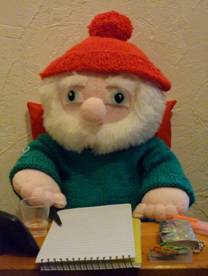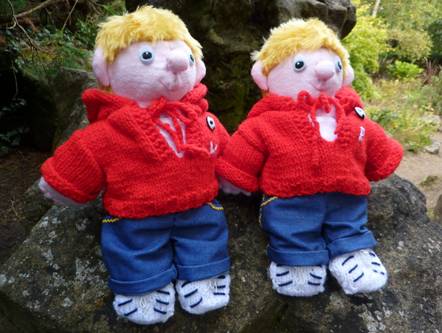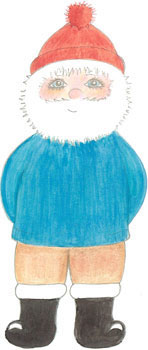
Salty Sam’s Fun Blog for Children
Number 542
Plague Village
Hello Everyone

A few weeks ago, l wrote a blog post about the Black Death.
There were many outbreaks of this plague over the centuries. lt was a truly dreaded disease caused by a bacterial infection transmitted by the fleas of rats but mainly the kind of fleas and lice that lived on humans – not seen too often in modern times.
Fleas and lice were able to live and breed on humans when people kept the same under garments on all the time.
They did this because houses were not heated too well and people needed lots of layers of clothes to keep them warm and also they often could not afford to have a lot of clothes to ring the changes.
And washing was not a daily thing!
Poor people tended to suffer from the plague more than rich people.
Poorer people lived in more cramped living conditions, they had less-clean houses and they had mattresses that were stuffed with straw which is something human lice could easily live in.
lf people knew that there was plague in their area, they very often left town if they could.
This is what happened in London in the Great Plague of 1665.
Even so, a quarter of London’s population was lost to the plague. Over 100,000 people died in London and about 100,000 in the rest of the country too.
There were so many people dying in a short space of time that they had to be put in mass burial pits. Dead carts were taken round collecting bodies. There were no funerals or ceremony; this was not possible. There was even a shortage of carts to collect the dead in the end because the carters were becoming ill too.
Some people were lucky enough to be buried in the graveyard of their local church. There were so many bodies to be buried that the level of the ground often went up considerably – maybe up to a metre or more.
At first, houses with people living in them that had contracted the plague were locked up. Anyone living with a plague victim was locked in with them too. A mark was put on the door and the house was guarded night and day. Nobody could go in or come out.
So if people still had a chance to get out of an area known to be hit by plague, they would flee to safety.
When the plague hit London in 1665, lots of people isolated themselves in boats on the River Thames or travelled to other areas – of course if they were infected or carrying lice in their clothing that carried the disease, they took the plague with them.
Eventually, the rate of death became so fast that the authorities did not bother to isolate houses anymore, they did not have the manpower needed to police this strategy – and plague victims were free to walk the streets.
The people of the time did not realize that the infection was spread by poor sanitation and thought it was spread by miasmas – or toxic air. Because of this, large bonfires were lit in the streets of London in the hope that the smoke would drive out the bad air. The people of the time thought that fire was purifying and would save them.
The disease was worse in the heat of summer because human fleas and lice bred faster in the warm conditions.
The disease abated somewhat in the winter but came back with a vengeance in the summer of 1666.
The first towns to be affected were towns in the south east of the country with trade links to London. Then the infection emerged in ports on the south coast and then in towns to the north. Colchester and Cambridge were especially badly hit. The students of Cambridge University were sent home spreading the disease further afield.
But small villages were to suffer too; like the small, isolated village of Eyam in the Derbyshire Peak District – situated right in the centre of England.
The area is at the base of the Pennines, the mountain range that forms the ‘backbone’ of England. lt was our first National Park.
ln the first week of September of 1665, Eyam was to import plague bacteria on a consignment of cloth from London. The tailor who had ordered it, left the unpacking of the goods to his assistant, George Viccars.
The cloth was found to be damps and it was hung up in front of the fire to dry. By handling the cloth, Viccars contracted the plague. There must have been lice or their droppings in the bundle and by breathing in the dust generated from handing the cloth the servant was infected and died a few days later.
His two young step sons Edward and Jonathan Cooper who lived in the same cottage died soon afterwards and then over the days that followed three of his near neighbours and the tailor, Alexander Hadfield, died too.
Then the disease started to spread through the village.
Over the following winter months a few people died of plague, but at the beginning of the following summer death rates rose again.
The rector sent his wife and children away to stay with friends in Yorkshire but his wife returned to support her husband only to die that August along with 77 other people during a month that saw particularly high rates of death. She was the only person that was allowed to be buried in the churchyard.
ln late May, the rector, the Rev William Mompesson had suggested that the village isolate itself in order to stop the spread of the disease to other nearby villages, and also the city of Sheffield.
The brave and now famous commitment was taken in order to save others.
The church was closed up and worship had to take place in the open air with strict social distancing rules put in place.
Provisions were brought from nearby villages and the money for the food was left by a well on the boundary of the quarantined village. The Earl of Devonshire and others also gave their charitable support.
The villages were constantly losing family, friends and neighbours – all people they knew.
Families had to bury their own dead close to home – and as quickly as possible. They had to use their fields and gardens.
The last plague victim was to die on 1st November 1666 and by that time 257 people had died out of a population of about 800 – almost a third of the villagers. lt had been a dreadful and scary time.
Some people survived because they were naturally immune to the plague.
Descendants today still carry that lucky chromosome.
The plague ravaged the village for 14 months in all.
ln 2020, 350 years later, the church was shut again in the lockdown imposed due to the Covid-19 pandemic.
Even today, Eyam is a small and isolated village surrounded by farmland, marshes and moor.
But the people of Eyam are remembered in history for their courageous decision and supreme sacrifice for others.
Bye bye everyone – don’t forget to subscribe to my blog!
Love and kisses
Salty Sam

www.christina-sinclair.com


Bill and Bob’s Joke of the Week![]()
![]()
Bill: Did you know that a lot of people who go to church like to eat doughnuts?
Bob: Well of course, doughnuts are holey.

Salty Sam © Christina Sinclair 2015
Unauthorized use and/or duplication of material from this blog without express and written permission from this blog’s author and owner is strictly prohibited.
Links may be used to www.christina-sinclair.com

Picture Gallery






 THE SALTY SAM NEWS DESK
THE SALTY SAM NEWS DESK

This week, Auntie Alice started her annual knit fest to knit toys and clothes for orphans and other needy and forgotten children around the world. She will from time to time join a knitter-natter group to have a chat with other knitters as she works.
The community of Rocky Bay contributes lots of items to be put in shoe boxes that will be handed to a child to brighten their Christmas.

A lot of the items are knitted or made by hand and a lot of them are bought in shops.
Then a few weeks before Christmas, a lorry packed with the presents sets off on a long journey to take the presents to children abroad who may not have a lot of joy or comfort in their lives. It makes them feel like they are not forgotten.
The boxes contain underwear, toiletries, school equipment, sweets and colourful toys.
The best loved toys are often cute, little, cuddly characters!

Breakable items, items that might leak and some other specific items are not very suitable – like toy guns.
Very often the older boys who are in their mid-teens are not so easy to buy for so Auntie Alice likes to knit lots of warm hats and gloves and cowls that can be slipped into their boxes. She uses darker blues and reds but puts in a pop of yellow or orange sometimes as well. The boys also like sunglasses, flip flops, magnifying glasses, binoculars, yoyos and little torches or any fascinating little gadgets like that.
A pencil case like the one on Blog Post 519 filled with a rubber, pencil sharpener, pens, pencils, highlighters and maths equipment would be useful too.
At one, time the vicar used to keep the gifts in his spare bedrooms, but since he got married and took in some youngsters that would have otherwise been homeless, there isn’t as much spare room in the vicarage anymore; so people keep what they are giving in their houses until it is time for some volunteers to sort everything out at the beginning of the winter.
They want to make sure that the presents are fairly and evenly distributed amongst the boxes.
Things bought in bulk like sweets, soap, toys and toothbrushes can be split into individual items.
They know how many they need to pack and what the ages are of the boys and girls they are sending boxes to.

There will be a huge box in the corner of a room somewhere in Auntie Alice’s cottage absolutely filled with knitted toys and garments when that time comes.
Captain Jack and I help to carry all the stuff down to the village hall when it is time to make up the boxes.
There is a pattern for a warm hat on this blog post if you would like to knit one for yourself or anyone else.
If you have a look on You Tube there are plenty of videos showing you children opening their shoe boxes full of presents and how excited they are to receive them.


*********************
*********************

 Quick Quiz
Quick Quiz
What word links with the others?
- – ticket seat screen
- – office box man
- – station pump can
- – club sky time
- – assistant door window
- – keeper bench gates
- – mouse guest hold
- – card book reception
- – stall square place
- – light sign car




lt’s the Weekend!

HOW TO MAKE A WARM HAT
This hat is warm because it has a nice, deep brim and a textured crown.
Trapping layers of air in your clothing can help to keep you warm.
Keeping your head warm can help enormously to keep you warm on a cold day.
There are three pattern sizes to fit adult and children’s heads.
This hat is knitted in black yarn but black is not a good colour for a knitting newbie to use. If you want a dark colour for a boy, choose a dark blue or green so that you can see your knitting more easily as you work; of course you can use brighter colours like yellow or red too.
If you wanted to use up scraps of double knitting from other projects and you don’t have enough to make a whole hat, you can knit the brim and crown in two different colours. Stripes won’t look good in moss stitch knitting.
You will be able to get a whole hat for an adult from a 100g ball.
ADULT OR TEENAGER SIZE
HAT (KNIT TWO)
Using 3¾mm knitting needles and dk yarn cast on 58 stitches
Slip 1 (knit 2, purl 2) repeat last 4 stitches to last stitch, knit 1
Repeat the last row 19 times
You now have 20 rows of ribbing
Change to 4mm knitting needles
Cast off 1 stitch then slip the next stitch (knit 1, purl 1) repeat the last 2 stitches to the end of the row
Slip 1 (knit 1, purl 1) repeat the last 2 stitches to the end of the row
Repeat this row 69 times
(70 rows moss stitch)
Don’t cast off
Cut off your yarn with some to spare and leave your stitches on this length of yarn
TO MAKE UP
Using over-sew stitching sew ribbing seams wrong sides together
Turn the hat out the other way
Pull in the top and sew the crown seams with right sides together
Neaten all ends
Turn brim up

CHILD SIZE
HAT (KNIT TWO)
Using 3¾mm knitting needles and dk yarn cast on 42 stitches
Slip 1 (knit 2, purl 2) repeat last 4 stitches to last stitch, knit 1
Repeat the last row 15 times
You now have 16 rows of ribbing
Change to 4mm knitting needles
Cast off 1 stitch then slip the next stitch (knit 1, purl 1) repeat the last 2 stitches to the end of the row
Slip 1 (knit 1, purl 1) repeat the last 2 stitches to the end of the row
Repeat this row 49 times
(50 rows moss stitch)
Don’t cast off
Cut off your yarn with some to spare and leave your stitches on this length of yarn

BABY SIZE
HAT (KNIT TWO)
Using 3¾mm knitting needles and dk yarn cast on 30 stitches
Slip 1 (knit 2, purl 2) repeat last 4 stitches to last stitch, knit 1
Repeat the last row 9 times
You now have 10 rows of ribbing
Change to 4mm knitting needles
Cast off 1 stitch then slip the next stitch (knit 1, purl 1) repeat the last 2 stitches to the end of the row
Slip 1 (knit 1, purl 1) repeat the last 2 stitches to the end of the row
Repeat this row 29 times
(30 rows moss stitch)
Don’t cast off
Cut off your yarn with some to spare and leave your stitches on this length of yarn

Please note that the material on this blog is for personal use and for use in classrooms only.
It is a copyright infringement and, therefore, illegal under international law to sell items made with these patterns.
Use of the toys and projects is at your own risk.
©Christina Sinclair Designs 2015


Quick Quiz Answers
- cinema – ticket seat screen
- post – office box man
- petrol – station pump can
- night – club sky time
- shop – assistant door window
- park – keeper bench gates
- house – mouse guest hold
- library – card book reception
- market – stall square place
- street – light sign car



